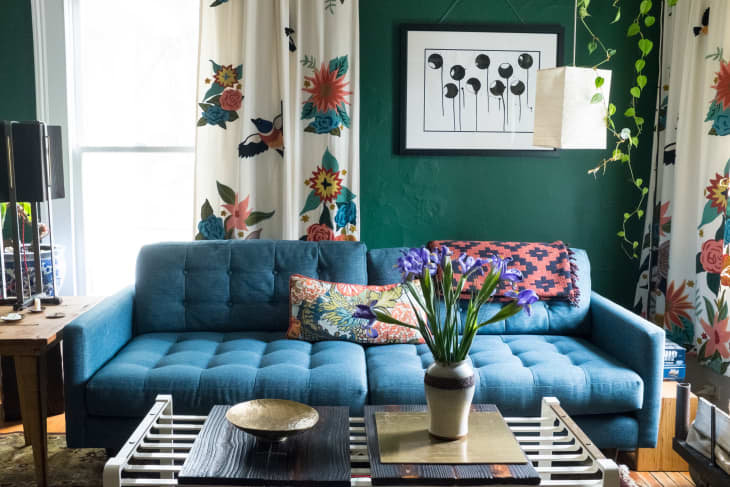This Is the Single Most Expensive Decorating Mistake Designers Have Made

Some lessons in life are learned the hard way — and interior design mistakes are no exception. While some decorating missteps can quickly be resolved with a simple decor swap or layout switch-up, other design oversights can have a more costly — and time-consuming — outcome.
No matter the size of the budget or project, there’s one expensive correct measurements ahead of time can create a domino effect that wreaks havoc on your design plans.
“The old adage of ‘measure twice, cut once’ is certainly one I learned the hard way,” says interior designer Maggie Griffin. “Whether it’s window treatments, rugs, or furniture, the scale of a room matters more than anything.”
Not only will taking proper measurements allow you to plan a spatially sound layout, interior designer Mark Lavender of M. Lavender Interiors says it will help you determine the right size — and amount of — furniture for the space. “Nothing looks worse than oversized furniture with no room to walk around or a light fixture that you bump your head on each time you pass under it,” he explains.
Curious which measurements are crucial to take before you outfit a room? These designer-approved tips will help you get started, so you don’t run into any costly decorating snafus.
Measure the whole room first
To create any kind of furniture or decor plan for a space, Lavender says you’ll need to measure the overall dimensions of the room, including the width and length of all four walls, as well as the height of the ceiling. “It’s also critical to locate and measure locations and sizes of electrical outlets, fireplaces, vents, and window and door openings within each room,” he explains. “The dimensions of these elements help determine the layout, quantity and size of furniture and furnishings for each room.”
Measure furniture items
Once you know the actual dimensions of the room, interior designer Beth Diana Smith says you can allocate the amount of space you’ll need for furniture or any other large-scale additions, like cabinetry and shelving. “Look for furnishings that will occupy roughly 60 to 70 percent of a wall, so you have room to incorporate side tables and additional seating on the adjacent walls,” she advises.
If you’re struggling to determine whether or not a particular piece of furniture is appropriately-scaled for a space, interior designer Christina Nielsen recommends taping the dimensions of the item on the floor, so you can get a better idea of how they’ll look inside the room. “This is especially important for made-to-order items,” she explains. “Since these pieces cannot be returned once the order is placed.”
Measure your elevator and access points
Bella Zakarian Mancini of Bella Mancini Design says one expensive mistake she’ll never make again is not measuring the dimensions of the elevator in an apartment building to ensure it was large enough to transport a pricey piece of furniture in its cab. “We once had to pay off a building super to hump a $50,000 dining table on top of an elevator when it wouldn’t make it into the cab,” she says. “Always measure the elevator before finalizing orders — many companies will do this for you in order to avoid a delivery nightmare for all.”
The same goes for measuring all of the access points into your home, as well as the room you’ll be placing the furniture piece in. “This includes any and all doorways, hallways, and stairways that the item will have to pass through,” Lavender explains. “Nothing is worse than purchasing furniture that requires a door to be removed or that has to be hoisted up to go into a space.”
If you’re working with a tight stairwell or narrow doorways, Hillary Kaplan, design principal at Mimi & Hill says that modular furniture pieces (that can be disassembled and rearranged to fit your needs), particularly sofas, are a savvy small space solution. “We have had to take apart so many sofas over the years to help clients get their couches into tight spaces,” she says. “Modular sofas break down in pieces and then lock in place together to solve this problem.”